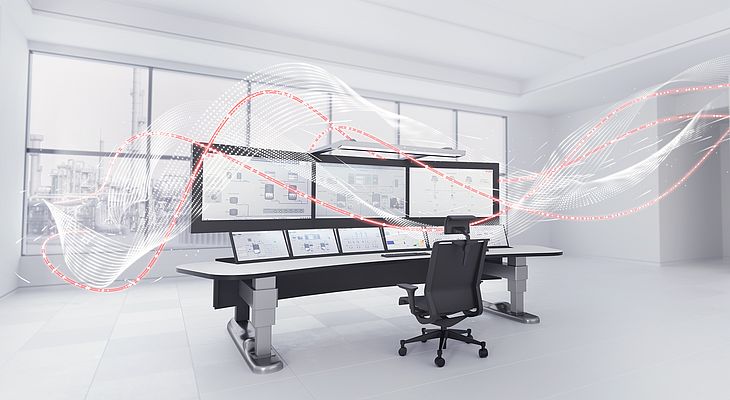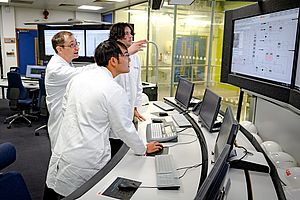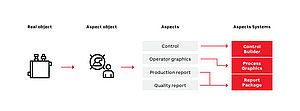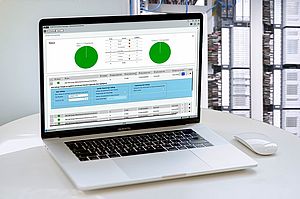Plant owners have always understood the significance of the value that can be derived from their data. The Industrial Internet of Things, or IIoT, has grown substantially as a result of this necessity. The majority of the data produced by manufacturing equipment and sensor readings is currently mostly contained within the Distributed Control System (DCS). The next industrial revolution will be driven by computing power, as industries seek to use cloud and edge computing together to harness additional processing capability. If computer processing is the engine, then data is the fuel. In order for technologies like machine learning and artificial intelligence (AI) to produce the anticipated business benefits, they require access to highquality data.
DCS, edge, and cloud computing create a powerful IIoT ecosystem that enables industries to harness the benefits of data-driven decision-making, predictive maintenance, process optimization, and improved operational efficiency. What is the role of the DCS within this ecosystem?
Trautmann: DCS, edge, and cloud computing create a powerful IIoT ecosystem that enables industries to harness the benefits of data-driven decision-making, predictive maintenance, process optimization, and improved operational efficiency. What is the role of the DCS within this ecosystem?
The Distributed Control System (DCS) is at the heart of the data flowing around a manufacturing plant. Designers of the first DCS offerings relied exclusively on purpose-built Operation Technology (OT) platforms to ensure the integrity of processes that, if uncontrolled, pose very real hazards to employees and surrounding communities.
In the 1990s, commercial off-the-shelf technology (COTS) and Information Technology (IT) began to augment the DCS with Windows-based Operator and Engineering stations and Ethernet communications to connect islands of control. Today, the integration of IT and OT enables control system data to be collected and analyzed to generate insights not easily acquired through traditional means.
Digital transformation through the Industrial Internet of Things (IIoT) is ever more present with edge, on-premise, and cloud-based platforms becoming increasingly more accessible.
However, DCS users want to go further, demanding that their DCSs become ever more open, expandable and flexible. Vendors have already gone some way to meeting this by shifting away from DCSs based on hardware with hard coded functionality, to solutions that are largely software-based. By leaving the hardware as a set of black boxes that can be programmed, the DCS becomes much more agile, allowing plug and play components and moving away from proprietary solutions that tie users to a single vendor.
What added value is brought to a plant through the powerful combination of the DCS, edge and cloud? Can this trio be described as the cornerstone of the future orchestration environment which promises to bring agility and flexibility to the process industries of tomorrow?
Trautmann: A major benefit of edge computing and industrial analytics is the ability to utilize masses of industrial data to optimize production processes. In particular, combining the cloud with the edge provides the ability to train AI models using data from IIoT devices and entire systems. These models can then be executed at the edge, allowing devices to respond more appropriately to changes.
OPC UA is an essential ingredient in the smooth integration of the DCS, edge and cloud. Can you provide some more in-depth detail explaining how it does this and what benefits it brings to the customer?
Trautmann: The Open Group approach envisions an automation architecture that divides systems and activities between a robust, evergreen core and an extended, digitally enabled environment that facilitates faster innovation and continuous performance improvements. This aim is realized by the decoupling of DCS hardware and software. Rather than being programmed to work with a specific piece of hardware, process controller and application software will instead exist as functional entities or modules. These modules can be deployed flexibly wherever they are needed, across purpose-built and industrial PC controllers, edge devices, on-premise servers and cloud platforms.
The OPC UA architecture also enhances security by adopting a zero-trust stance at the core. This means that all components will be required to digitally demonstrate their identity and originality, as well as their authorization to carry out specific tasks. This is both a flexible and robust solution that will be able to adapt in an evolving threat landscape.
What are the key technical challenges and security considerations associated with achieving seamless interoperability between DCS, edge and cloud platforms, and how can these challenges be addressed?
Trautmann: While Distributed Control Systems have provided an ideal solution for managing the functions needed to keep plants operating efficiently and safely, they are struggling to meet the expectations arising from the emergence of digital technologies in the industrial space. Although developments such as smart instrumentation and sensors utilizing IIoT technologies are transforming possibilities for control and access to data, the difficulties of integrating them into Distributed Control Systems have meant that in some cases their full potential has remained largely unrealized.
For existing systems especially, carrying out the modifications needed to accommodate new technologies such as smart field devices like transmitters, sensors and actuators could be a complicated and potentially risky process, incurring significant time and cost to perform due to the need for any new functions or components to be tested. Consequently, the response of many plant owners has been to maintain the status quo, keeping their Distributed Control Systems as they are.
A key element to address these challenges is to select an edge technology that seamlessly and securely integrates into the existing OT landscape without compromising plant productivity. Protecting the core of the plant and at the same time tapping into the existing information model allows the edge to unfold its value by providing a secure information gateway to the cloud and an on-premise application eco-system.
In what ways does the interoperability of DCS, edge and cloud applications enhance real-time data analysis and decision-making capabilities in industrial environments?
Trautmann: Essentially, the edge can be thought of in two ways. The first is as an extension of the cloud – the edge pre-processes data from distributed devices, which may use different languages and communications protocols, such as Modbus TCP, IEC61850, Profinet, or serial communications like Modbus RTU. As well as distributed devices, ABB supports the entire DCS, which is connected using a dedicated system extension that preserves the DCS’ information model. In this regard, the role of the edge is to collect and transform data in a format that the cloud can understand.
The cloud then performs data processing, the results of which alters what happens at the edge. For example, cloud computing makes possible machine learning and training of models that can then be deployed back to the edge. The edge hosts applications and uses these models as a guide to respond to local data from the onsite devices.
Data drives digitalization yet today, an average plant uses less than 20% of the data it generates. How will emerging edge and cloud technologies change the automation landscape when combined with the future DCS to enable companies to transform more of this data into actionable insights and thus achieve smarter and more sustainable operations?
Trautmann: The NAMUR Open Architecture (NOA) enables the straightforward and cost-effective addition of a secure second communications channel, transporting additional real-time data from edge devices in the field in parallel to core process measurement data. NOA is a vision for how to apply digital technologies to control systems without disrupting proven workflows in process-oriented industries including chemicals, food and pharmaceuticals. NOA aims to make production data easily and securely usable for plant and asset monitoring as well as optimization.
NOA adds a layer to a Distributed Control System that enables extra functions to be added by providing an open and secure environment for integrating IT components from the field up to the enterprise level. With this new approach, operators can extend the capabilities of their control systems to include new functions such as asset and device management, optimization, and planning, without affecting the core functions of the DCS itself and without the time or risks previously associated with making changes or upgrading.
By enabling edge and cloud technologies to be easily integrated into the Distributed Control System, the NOA approach will now allow users to fully unlock the possibilities of Industry 4.0 by enabling the improved flow of data throughout an organization that can be securely accessed as and when required to allow informed decisions and actions.



























